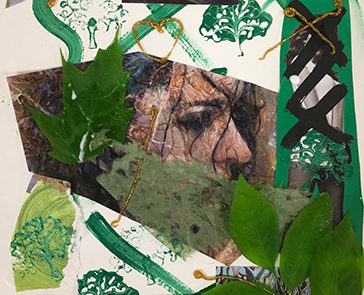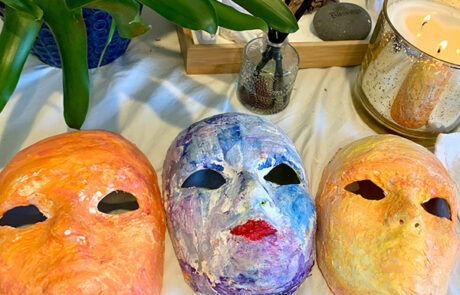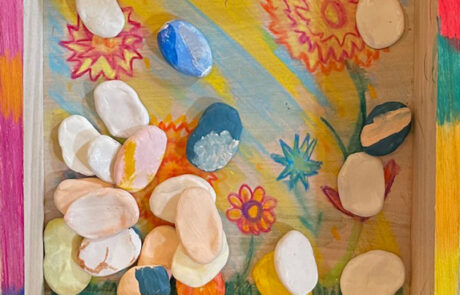
“Art is as natural as sunshine and as vital as nourishment.” – MaryAnn F. Kohl
It is no coincidence that art preceded language in human evolution: digging pigments from the earth, pressing our hands onto a surface, or using a rock to carve an image were the easiest way to communicate that, yes, “We exist.”
“Art is as natural as sunshine and as vital as nourishment.” – MaryAnn F. Kohl
It is no coincidence that art preceded language in human evolution: digging pigments from the earth, pressing our hands onto a surface, or using a rock to carve an image were the easiest way to communicate that, yes, “We exist.”

From the moment we are born, our senses are barraged with images, smells, sounds and sensations. And, every single one of these experiences is stored somewhere in our brain and consciousness, waiting to be processed, integrated and communicated as part of who we are and how we feel.

“Washington Crossing the Delaware,” Emanuel Gottlieb Leutze, 1851
Art provides a healthy way to express ourselves: emotionally, physically and spiritually. It also is our means of communicating and interpreting our world. Without art, we would have no clues to our visual history – or, how this history was perceived by our ancestors.
This need for expression goes far beyond documentation: when we make art, we feel more alive, connected and at peace; inspired to express our innermost thoughts and feelings within the safe-haven of creativity.
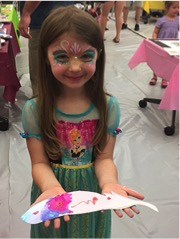
Spread Your Wings event, Dell Children’s Hospital
Making things not only makes us feel better, it heals: Documented benefits include greatly reducing stress and anxiety, diminishing depression, jogging the memories of Alzheimer’s patients and significantly reducing the side effects of chemotherapy.
Brain scans and MRIs also prove that creativity does amazing things for our brain: According to one CNN report, “Creative activities also help the brain recover after illness, injury, or stress.”
As adults, there are infinite ways to integrate creativity into our lives that can truly transform our lives and our world: but what about our children?

Student art, studioinaschool.org
In this online world of single-parent households and social media, how do we provide our youth with the hands-on, fun experience of making or doing something that expresses who they truly are, and has nothing to do with the latest app? How do we regularly help them de-stress and process the lifelong repercussions of today’s issues, including emotional disorders, bullying, addiction, broken homes and everything in-between? How do we inspire imaginations, encourage invention and help them express the beauty and pain of the world? How can we support our nation’s children in smiling, laughing and living healthier, more productive lives?
By providing them with endless opportunities to express themselves and their imaginations through creativity: at home, in our communities and in school – regardless of the political climate. It’s time to get out the squirt gun, plant a garden, bake sculptey clay, paint by numbers and make up imaginary games. Whatever creative path you walk with or without your kids, it all translates to greater well-being. That said, since our grown-up lives don’t always allow for ongoing creative indulgence, we can still help our kids by supporting art programs in school: those that are funded by our government, those that aren’t, and those that we make up all on our own.
The benefits of arts education are way too compelling to ignore:
- A student involved in the arts is four times more likely to be recognized for academic achievement.
- The Center for Arts Education published a report in 2009 that found that schools with the lowest access had the highest dropout rates. And, that schools with the highest graduation rates also had the greatest access to arts education and resources.
And, “Many at-risk students cite participation in the arts as their reason for staying.” - The trend continues with higher education: Low-income students who are highly engaged in the arts are twice as likely to graduate college as their peers with no arts education.
-
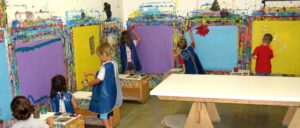
Children’s Art Studio, Los Angeles
A 2002 report by the Arts Education Partnership revealed that schoolchildren exposed to drama, music and dance are often more proficient at reading, writing, and math. They also did better on standardized tests, had improved social skills and were more motivated than those who had reduced or no access.
- A study of Missouri public schools in 2010 found that greater arts education led to fewer disciplinary infractions and higher attendance, graduation rates and test scores. Similar studies of other statewide education systems have discovered nearly identical results.
-

“Dragonflies are so Beautiful?” – from 2006 PTA Reflections Exhibit. Oil pastel by Emily Zou, Grade 2, Age 7, Haun Elementary School, Plano Texas
In “Neuroeducation: Learning, Arts and the Brain,” Johns Hopkins researchers shared findings showing that arts education can help rewire the brain in positive ways. It increased the efficiency of attention spans, even in other areas of study.
Translation? Students with arts education perform better in reading, writing and math. They have significantly increased graduation rates in both high school and college, fewer discipline and attendance issues, have better motor and attention skills and basically have healthier brains. They are also more likely to be recognized for achievement, filling them with a sense of worth and purpose – in other words, making art helps kids feel good about themselves.
Best of all, children with ongoing access to arts education enter the world with a healthy, lifelong tool to support them in expressing themselves and processing emotions. We can also help them do this at home – it’s all about welcoming and nurturing creativity in any way, shape or form. The best part is this: getting creative with our kids, family, friends and community offers huge benefits to everyone on every level.
Namaste,

“Every artist dips his brush in his own soul, painting his nature into his own pictures.”
– Henry Ward Beecher

Spread Your Wings, Dell Children’s Hospital, Art of Giving event, 2017

